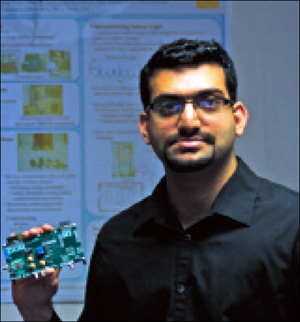Many industrial fishing operations use massive seine nets, and often, as the nets are hauled in with a catch, pieces tear away. Environmental groups estimate these “ghost nets” account for 100 million tons of waste annually, or as much as 30 percent of the plastic pollution littering the world’s oceans. Worse, the nets often entangle and kill whales, dolphins, tortoises and other marine life.
Alejandro Plasencia and a team of students at the Elisava Barcelona School of Design and Engineering created the Remora Project to explore practical ways to clean up marine pollution. “We wanted to develop a project for the fishing industry that turned sustainability into a driver of profit,” Plasencia says.

The team decided to use a radio device on sections of net, so fishing vessels could identify when pieces of seine were lost at sea and quickly recover them, thereby avoiding potential fines. The first prototypes were injection-molded plastic cases housing Bluetooth Low Energy (BLE) beacons, which could be attached with plastic zip ties. But the BLE tags added too much weight to the net, and the beacons were only useful while their battery lasted.
The team developed a new set of prototypes that used light, thin sheets of polyethylene with d2w additive, which makes the plastic biodegradable. The sheets were laser-cut in a pattern that limits the size to the minimum required to house an embedded passive RFID tag and enable it to be attached to the net.
The team proved RFID tags could be used to identify sections of netting, and then developed a reader that fits around the opening where the net is pulled onto the deck, and a smartphone application that shows, based on the tags that were not read, which sections of the net are missing. A fishing crew could retrieve the missing pieces or give the coordinates of the ripped seine to a net recycling organization. The team is also developing industrial fishing nets fabricated with the d2w additive, which causes the net to biodegrade after 4 years (the end of its normal life cycle).
The system is still a couple of years from commercialization, but Plasencia says: “Three associations have offered to help us search for financial aid, and two companies that manufacture biodegradable thermoplastics have offered us their help. We will investigate which biodegradable plastics resist ultraviolet light and salt water exposure, and which respond better to laser cutting and electronic printing.”

